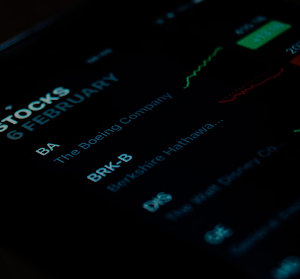In today’s rapidly evolving business landscape, the ability to gain actionable market insights is more important than ever. Businesses need to stay ahead of trends, understand consumer behavior, and outpace competitors in order to succeed. While traditional primary research methods—such as surveys, focus groups, and interviews—are invaluable, they can be time-consuming and expensive. This is where desk reaserch comes in. By leveraging secondary data sources, companies can quickly and cost-effectively gather insights that help inform strategic decisions. In this comprehensive guide, we’ll explore how to effectively harness desk research to gain deep market insights, uncover trends, and drive informed business decisions.
What is Desk Research?
Desk research, often referred to as secondary research, involves collecting data that has already been published or made available by other sources. This can include reports, articles, market research studies, academic papers, government publications, and company data. Essentially, desk research enables researchers to analyze existing information rather than gathering new data directly through surveys or experiments.
In the context of market insights, desk research focuses on obtaining information about industries, competitors, customer preferences, economic trends, and emerging market opportunities. By studying data collected by others, businesses can make informed decisions without the significant time and financial investment required for primary research.
Types of Desk Research Sources
The power of desk research lies in its ability to tap into various types of secondary data sources. Below are the main types of data that can be leveraged for market insights:
1. Industry Reports
Industry reports are comprehensive documents that provide insights into market conditions, trends, forecasts, and challenges. They are often published by market research firms, trade organizations, and consulting companies. These reports can provide an in-depth analysis of a particular sector, including data on market size, growth potential, consumer behavior, and competitive landscapes.
- Example: A report from Statista on the global e-commerce market can provide insights into trends like mobile shopping, user demographics, and growth projections.
2. Government Publications and Databases
Governments and regulatory bodies often release valuable data through official publications, statistical reports, and public databases. These sources offer credible information on macroeconomic factors, population trends, employment statistics, industry regulations, and more.
- Example: The U.S. Census Bureau provides detailed demographic data, which can help businesses understand consumer characteristics and market segmentation.
3. Market Research Databases
Dedicated market research databases like IBISWorld, Euromonitor, and Mintel offer access to comprehensive reports and data on a variety of markets and industries. These platforms aggregate data on consumer behavior, market trends, competitor strategies, and growth opportunities.
- Example: Euromonitor provides global data on industries ranging from food and beverages to healthcare, helping businesses identify emerging trends and market dynamics.
4. Company Reports and Public Filings
Companies, especially publicly traded ones, release annual reports, financial statements, investor presentations, and other filings that contain valuable insights into their market position, financial health, and strategic direction. These documents can provide critical information on competitors, including their strengths, weaknesses, and market strategies.
- Example: An annual report from a leading competitor in the technology sector can reveal their latest innovations, revenue growth, and future market plans.
5. Social Media and Online Forums
In the age of social media, platforms like Twitter, Facebook, LinkedIn, and specialized forums are a goldmine for understanding consumer sentiments, brand perception, and emerging trends. By monitoring social media conversations and online discussions, businesses can gain real-time insights into how consumers perceive products, services, and brands.
- Example: A Twitter sentiment analysis could help a brand assess public opinion about a new product launch, identifying positive and negative feedback.
6. Academic Research and Publications
Universities and research institutions publish academic papers that explore trends, behaviors, and emerging technologies. While these sources may not always provide direct market data, they offer valuable theoretical frameworks, research methodologies, and predictions that can inform strategic thinking.
- Example: An academic study on consumer psychology might uncover insights into how emotional factors influence purchasing decisions.
Desk Research Techniques for Market Insights
To effectively harness desk research for market insights, researchers must use specific techniques to ensure that the data is relevant, accurate, and actionable. Below are key techniques for collecting, analyzing, and interpreting desk research:
1. Defining Research Objectives
Before diving into secondary data, it’s important to define clear research objectives. What specific market insights are you trying to uncover? Are you looking to understand customer preferences, assess market competition, identify trends, or analyze economic conditions? By establishing focused objectives, researchers can avoid data overload and ensure that the information they gather is directly aligned with business needs.
- Example: A company in the tech industry might set a research objective to understand the impact of 5G technology on consumer demand for mobile devices.
2. Identifying Relevant Sources
Once objectives are established, the next step is to identify the most relevant secondary sources. This involves searching for the best available industry reports, government publications, academic papers, and databases. Choosing credible and reliable sources is essential to ensure the accuracy and relevance of the insights gained.
- Example: For insights into the automotive industry, a business might prioritize data from organizations like OECD (Organization for Economic Cooperation and Development), IHS Markit, and J.D. Power.
3. Synthesizing Data
Desk research often involves sifting through large volumes of data from multiple sources. It’s important to synthesize this information by categorizing it into relevant themes, trends, and patterns. Researchers should look for correlations and inconsistencies across different data sets to form a cohesive understanding of the market.
- Example: A company analyzing consumer behavior might synthesize data from several sources, including surveys, purchase data, and social media sentiment, to create a comprehensive picture of consumer preferences.
4. Trend Analysis
One of the most powerful applications of desk research is trend analysis. By analyzing historical data, market reports, and consumer behavior over time, businesses can identify emerging trends and forecast future market conditions. This can help companies make proactive decisions and capitalize on growth opportunities.
- Example: Analyzing e-commerce growth trends across different regions over the past five years might reveal key insights into the rise of mobile shopping in emerging markets.
5. Competitive Analysis
Desk research is particularly effective for understanding the competitive landscape. By examining competitor reports, industry publications, and publicly available financial data, businesses can assess the strengths and weaknesses of their competitors. This helps identify market gaps, opportunities for differentiation, and potential threats.
- Example: A startup in the fitness industry might use desk research to analyze the market share, pricing strategies, and marketing tactics of established players like Peloton and Nike.
Applications of Desk Research for Market Insights
Desk research is widely used across industries and serves various business functions. Below are some key applications:
1. Market Entry and Expansion
For companies looking to enter new markets or expand their reach, desk research can provide critical insights into local consumer behavior, regulatory conditions, and industry opportunities. By understanding the target market, businesses can develop tailored marketing strategies and optimize product offerings.
- Example: A food brand looking to expand into the Asian market might use desk research to understand regional taste preferences, dietary trends, and local competitors.
2. Product Development
Desk research helps businesses understand market gaps, consumer needs, and emerging trends, which can drive product innovation. By analyzing existing market reports, businesses can identify underserved segments and opportunities for new products or services.
- Example: A company in the health and wellness sector might use desk research to discover a growing demand for plant-based protein supplements and then develop new products to cater to that trend.
3. Marketing Strategy
Desk research plays a crucial role in shaping marketing strategies. It helps businesses understand consumer behavior, identify key demographics, assess brand perception, and identify opportunities for differentiation. With these insights, companies can craft effective marketing messages, select the right channels, and optimize campaigns.
- Example: A company planning a new ad campaign might analyze social media discussions and online reviews to gauge the emotional connection consumers have with their brand and competitors.
4. Customer Segmentation
Understanding customer segments is essential for targeting the right audience with the right products. Desk research helps businesses identify demographic, geographic, and psychographic segments that are most likely to be interested in their offerings.
- Example: A fashion brand might use desk research to identify key trends in consumer purchasing behavior and segment their audience by age, income, and fashion preferences.
Conclusion
Harnessing desk research for market insights offers businesses a powerful way to make data-driven decisions quickly and cost-effectively. By tapping into secondary data sources such as industry reports, government publications, and competitor analysis, companies can uncover valuable trends, understand consumer behavior, and assess market dynamics. With the right techniques and tools, desk research can provide the foundation for strategic decisions that drive growth, innovation, and competitive advantage. Whether you’re entering new markets, developing new products, or refining your marketing strategies, desk research should be an integral part of your business intelligence toolkit.




